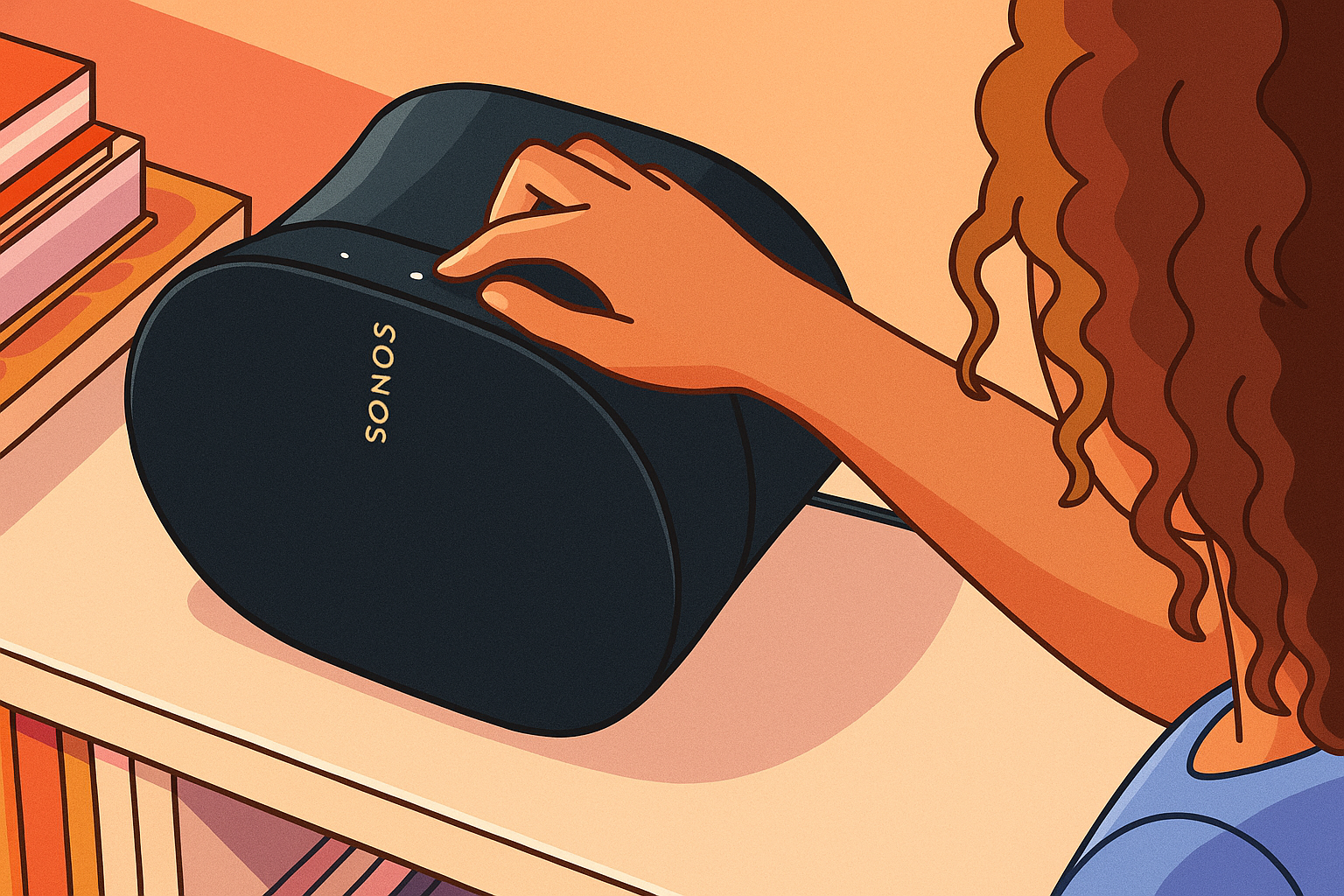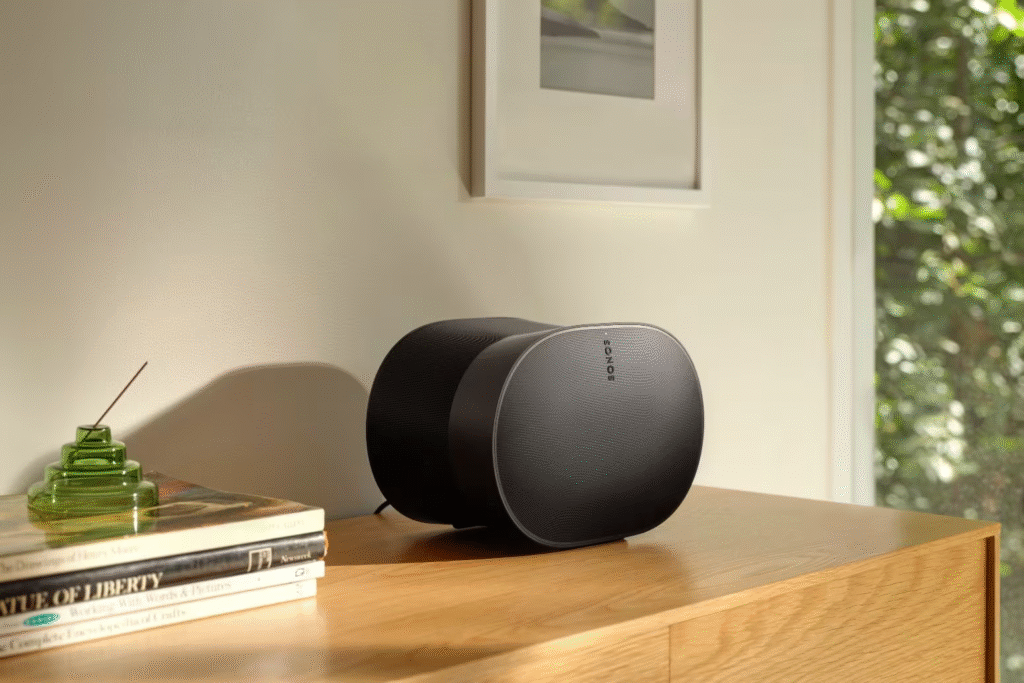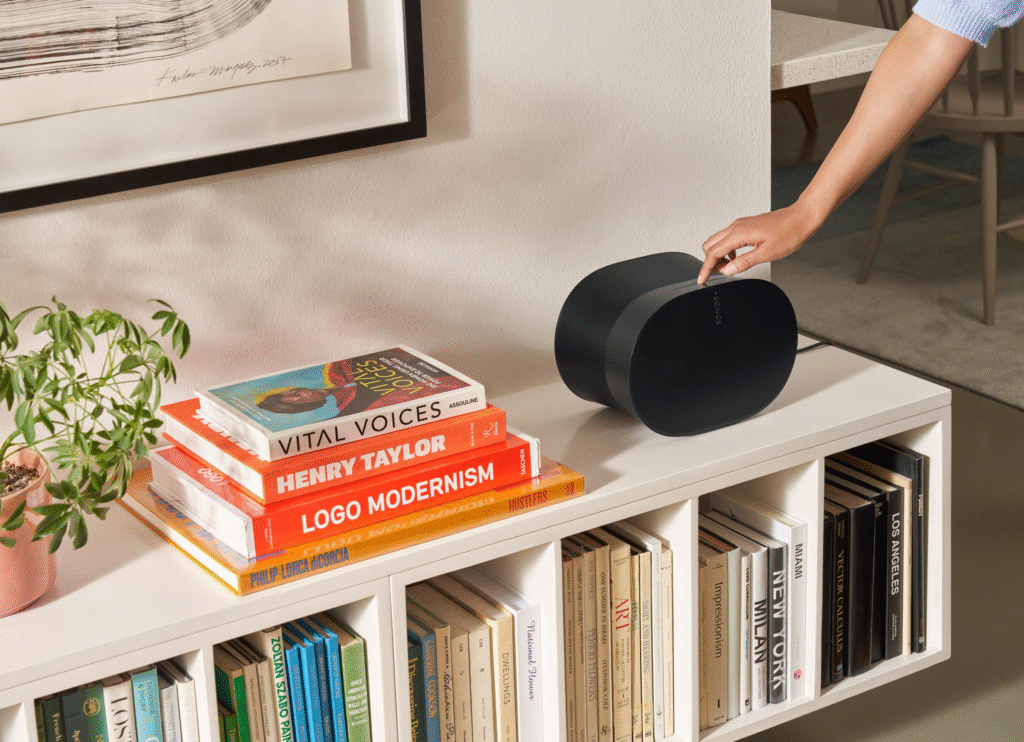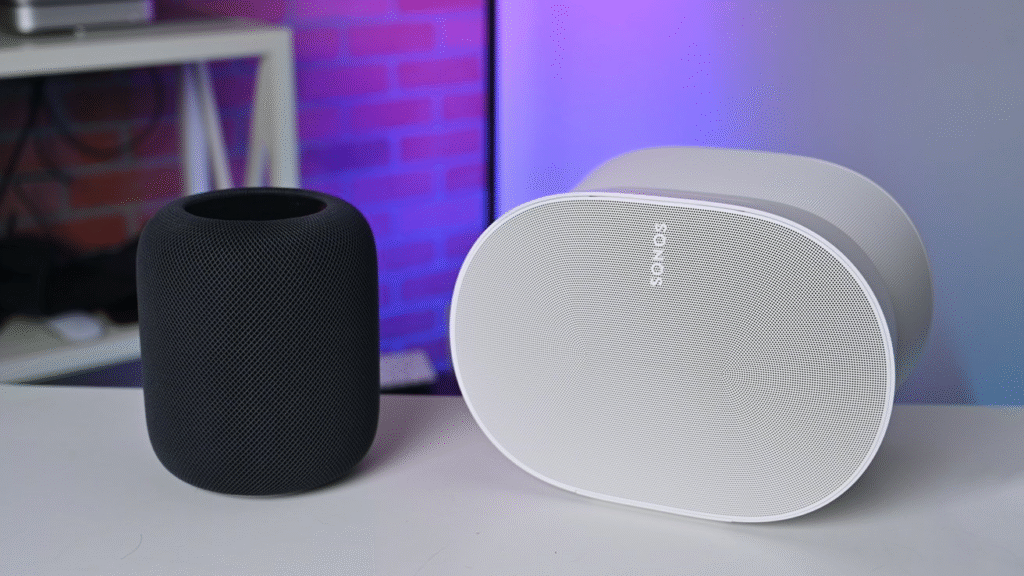Physical Address
304 North Cardinal St.
Dorchester Center, MA 02124
Physical Address
304 North Cardinal St.
Dorchester Center, MA 02124

If you’re also like me and can’t accomplish anything unless music is streaming in the background—whether working, cooking, or having friends over—then you’ve probably already been well-versed in the Sonos universe. Being a longtime Sonos speaker aficionado myself, I’ve had hands-on experience with almost all of their lineup. But believe me, the Sonos Era 300 played a different chord. It’s not a wireless speaker, it’s a flat-out spatial audio experience that makes your room feel like a live show somehow. That’s not marketing hype—it’s genuinely next level.
So, in this review, I’ll take you through all you need to know about the Sonos Era 300—from its standout features to how it compares with its closest rival (spoiler: Apple HomePod 2), and most importantly, whether or not this beautiful-looking, sort-of-pricey portable speaker is worth considering for you. So, let’s dive in.
First things first—yes, the Sonos Era 300 is a bit weird-looking to start with. It’s not exactly a speaker box. It’s approximately hourglass-shaped from the side, like it was designed in some science fiction sound laboratory. I’ll be honest with you, when I took it out of the box, I wasn’t quite sure whether to plug it in or put it on a shelf like a sculpture. But when it powered on, I understood. That weird shape isn’t just for show—it’s for a reason. It has six drivers pointed in different directions, which allows rich spatial audio to bounce sound all around your room.

There are touch controls at the top that are super-responsive—volume swipe, play/pause, skip, all within reach. And overall build? Top-notch. It’s that Sonos classic design—solid, sleek, and understated. And there’s even a physical switch at the back to disable voice assistants if you’re worried about privacy, which is a nice touch in this day and age of always-on.
Okay, on to the juicy stuff: how does the Sonos Era 300 sound?
In a word: robust. In a few words: it sounds crisp, well-tuned, and massive given its small stature. The speaker is optimized for spatial audio, and trust me when I say that if you’ve never listened to your favorite tune re-mastered in Dolby Atmos, you’re not doing yourself justice. It fills out the space in a way that’s hard to describe—it’s as if sound gains dimension. I heard “Blinding Lights” by The Weeknd and it felt as if the synths were coming from the back and the vocals stayed at center. It sent shivers through me.
The most surprising part is that it doesn’t just blast music forward—it surrounds you. That’s because of the side-firing and upward drivers, which bounce sound off walls and ceilings. It sounds best sitting in an open area, but even when I jammed it into a corner at a dinner party, it was able to get sound into all corners of the room without muddying.
The bass? Deep and punchy. Mids? Clean. Highs? Crisp. It doesn’t distort even when you crank it up—perfect for loud movie nights or dance floors in your living room. And if you’re using two Era 300s as a stereo pair or as surrounds with a Sonos Arc soundbar, you’re not just watching a movie—you’re inside it.
The Sonos Era 300 is not trying to be the jack-of-all-trades—it’s attempting to do a few smart things really well. First, it boasts both Wi-Fi and Bluetooth connectivity. As someone who has used Bluetooth speakers to drop out during crucial chorus moments, this double connectivity is a lifesaver. I can stream on Sonos via Wi-Fi at home or seamlessly switch to Bluetooth when I take it out of home and out for a backyard chill session.

You also get Trueplay tuning, which adjusts the output of the speaker based on your room’s acoustics. This used to be iOS-exclusive, but now Android owners can join in on the fun, thanks to the Era 300’s built-in microphones doing all the tuning for you. No more waving your phone around the room awkwardly.
It is also voice assistant compatible—Sonos Voice Control and Alexa—but Google Assistant (due to some licensing fiasco). Sonos’ own voice assistant has been designed so reliable for me that I don’t actually miss Google here.
And here’s something quirky: you can actually plug things into it. There’s a USB-C line-in (with adapter), so you can plug in a turntable or even an old iPod if you’re feeling some retro vibes. I plugged in my vinyl setup, and it made the old records sound like they’d been resurrected in 2025.
Now comes the part that can be confusing to some: although Sonos Era 300 is discussed alongside other portable speakers, it is not literally portable in the battery-pack sense. You can quickly grab it and move it between rooms—it is light enough to do so—but there is no internal battery. This is a wireless speaker in the Wi-Fi and Bluetooth sense, but not “put it in a backpack” wireless.

Of course, that being said, I’ve had no trouble at all in moving it wherever I require it. From kitchen to home office to balcony—it follows where the vibes are required. Just don’t think you can lug it out to the beach or on a picnic without a power source within reach.
If there’s any speaker out there that can keep up with the Era 300, it’s the Apple HomePod 2. So how do they match up?
They both support spatial audio, both feature excellent audio drivers, and both resemble something out of a cutting-edge design museum. The HomePod 2 also integrates seamlessly into the Apple ecosystem—so if you’re swimming in iDevices, you may go that direction. But this is where the Sonos advantage comes into play.

The Sonos Era 300 plays well with others. Team Android or iOS, Spotify or Apple Music, Alexa or Sonos Voice—you’re not locked into one ecosystem. That’s a major plus for me as someone constantly switching between devices and apps. And hands-down, Sonos’ multi-room capabilities are superior. I can connect my Era 300 with a Sonos Beam or Sonos Five in the blink of an eye, something Apple still makes unnecessarily cumbersome unless you’re fully committed to AirPlay.
When it comes to sound, they both sound terrific, but the Era 300 sounds more roomy, especially in the midrange. It seems like it’s designed to perform in a wider variety of environments, while the HomePod sometimes even sounds “tuned” just for Apple’s test rooms.
Here’s the catch—I would not recommend the Sonos Era 300 to anyone and everyone. If you’re looking for a portable speaker that you can take camping or to the beach, this is not it. But if you’re someone who really, really loves audio quality—like, you’re the type of person that people pass the aux cord to at every party—this speaker will treat you like royalty.
It’s perfect for:
Not for people who simply want background music while cleaning time. This is for people who listen—who want to hear the piano in the left, the vocal in the middle, and the guitar in the right like you’re in the studio.
Priced at around $450, the Sonos Era 300 is certainly not cheap. But for what it offers, I think it’s all worth every rupee. It’s a wireless speaker designed for the future of sound, not your next playlist. With Dolby Atmos support, bigger-than-life room-filling sound, and seamless connectivity, it’s really one of the finest Sonos speakers I’ve ever had.

Would I recommend it to a newcomer to Sonos? Not likely—you might do better to begin with the Sonos One or Roam. But if you’ve already dipped your toes in the water with the Sonos system and want the next step in serious immersive sound, the Era 300 will leave you breathless.
And if you’re the type of person that I am and music is ambient noise plus your mood, your focus, your escape—then yeah, this one’s for you.
Check out these related articles:
Share your details, and we will get back to you shortly!
This will close in 0 seconds
Share your details, and we will get back to you shortly!
This will close in 0 seconds